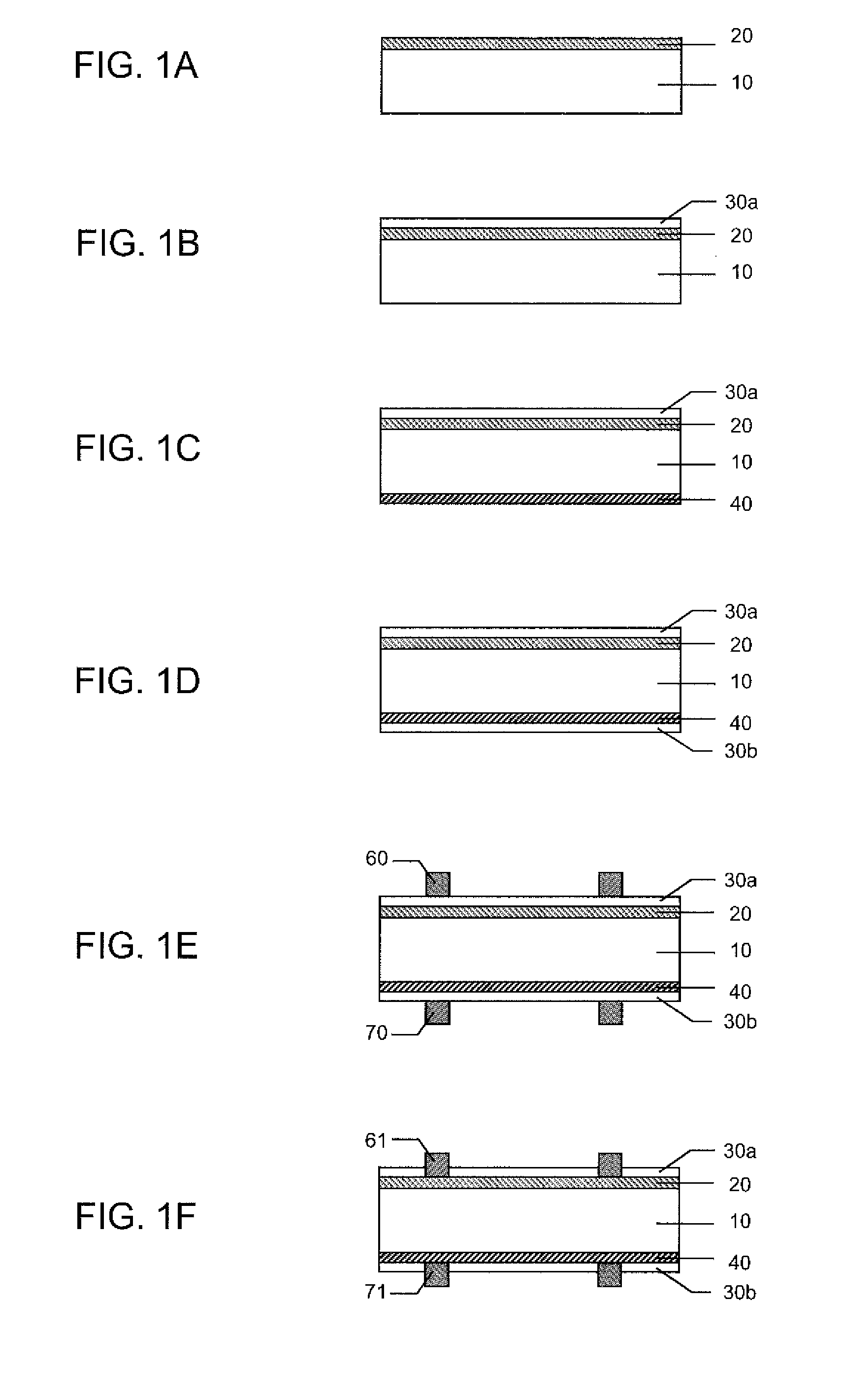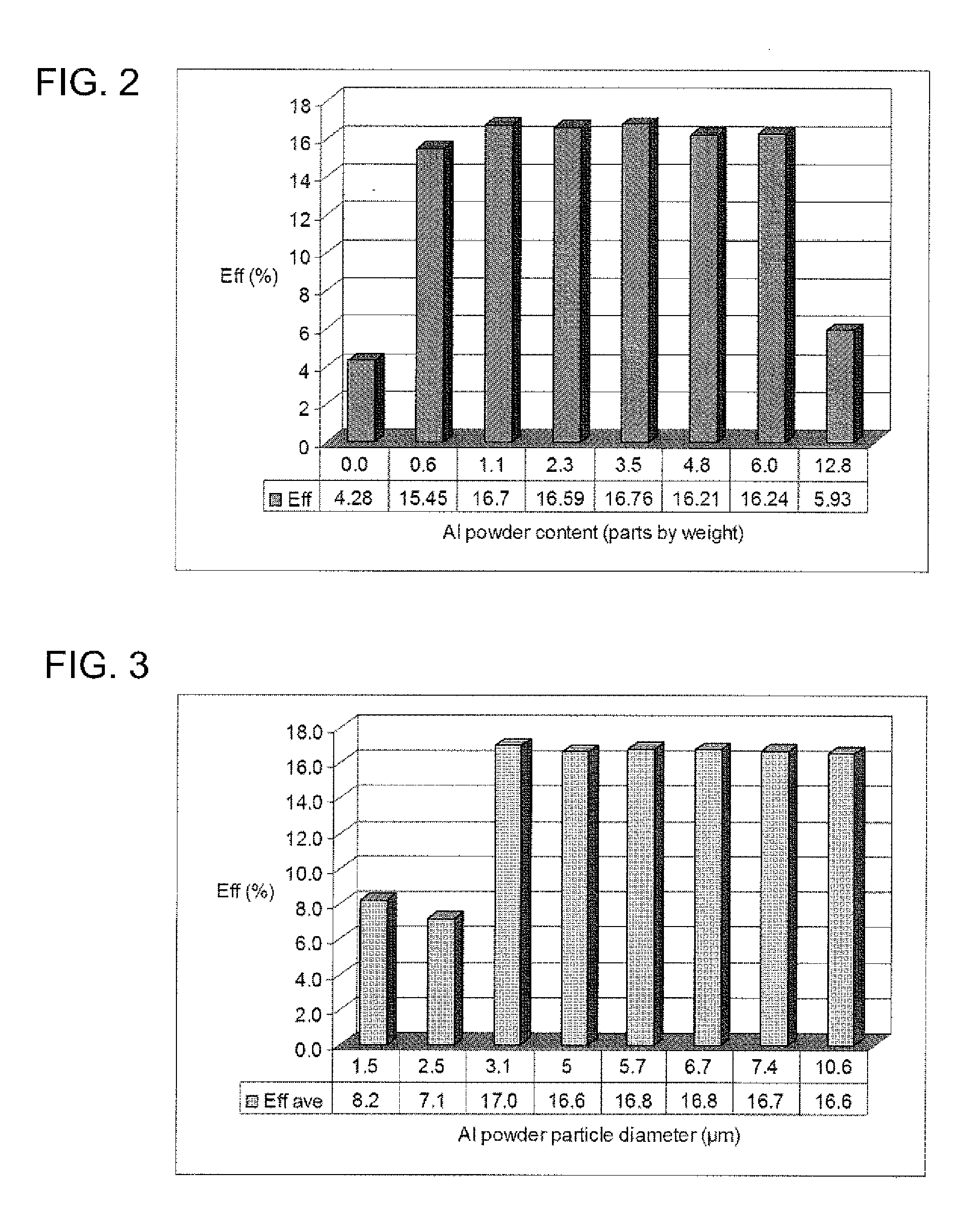Method of manufacturing solar cell electrode
a solar cell and electrode technology, applied in the direction of electrical equipment, semiconductor devices, non-conductive materials with dispersed conductive materials, etc., can solve the problem of low conversion efficiency and achieve the effect of low contact resistan
- Summary
- Abstract
- Description
- Claims
- Application Information
AI Technical Summary
Benefits of technology
Problems solved by technology
Method used
Image
Examples
example
[0071]The present invention is illustrated by, but is not limited to, the following examples.
Preparation of Conductive Paste
[0072]Conductive pastes to form p-type electrodes were prepared according to the following procedure by using the following materials.
[0073]Conductive powder: Spherical silver (Ag) powder with particle diameter (D50) of 3 μm as determined with a laser scattering-type particle size distribution measuring apparatus.
[0074]Aluminum (Al) powder: Spherical aluminum (Al) powder with particle diameter (D50) of 3.5 μm as determined with a laser scattering-type particle size distribution measuring apparatus.
[0075]Glass frit: Glass frit containing 50.0 mol % of PbO, 22.0 mol % of SiO2, 2.0 mol % of Al2O3, 26.0 mol % of B2O3. The softening point determined by DTA was 434° C.
[0076]Organic medium: A texanol solution of ethyl cellulose.
[0077]Additive: a viscosity modifier.
[0078]The organic medium was mixed with the viscosity modifier for 15 minutes.
[0079]To enable the uniform...
PUM
 Login to view more
Login to view more Abstract
Description
Claims
Application Information
 Login to view more
Login to view more - R&D Engineer
- R&D Manager
- IP Professional
- Industry Leading Data Capabilities
- Powerful AI technology
- Patent DNA Extraction
Browse by: Latest US Patents, China's latest patents, Technical Efficacy Thesaurus, Application Domain, Technology Topic.
© 2024 PatSnap. All rights reserved.Legal|Privacy policy|Modern Slavery Act Transparency Statement|Sitemap



